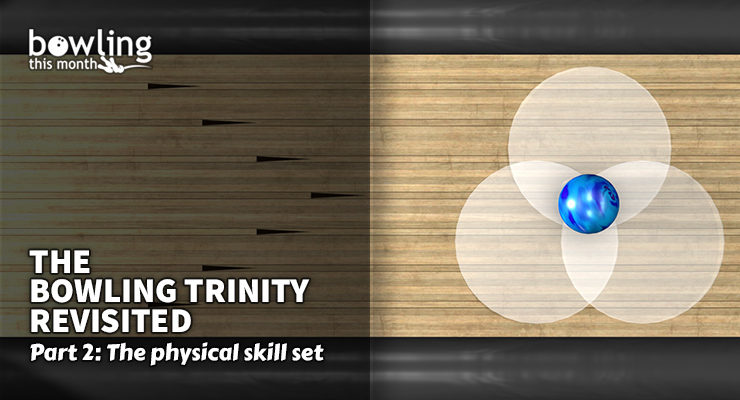Last time, I reviewed some of the basic changes in my approach to the Bowling Trinity, which represent the physical, mental, and tactical aspects of the sport of bowling. Plenty has changed in each area since I first wrote about them eight years ago, so the next few articles will break down each one, starting with the physical game.
First, we’ll go over what’s new in this area, and then we’ll discuss how expanding versus mastering your skills impacts your approach to improving your game. Along the way, I’ll add some tips and tricks for certain elements of the game to help you progress even further.
What’s new
Looking back to just seven years ago, there was a lot less emphasis on fitness in bowling, even at the highest levels of the sport. When I started as a full-time coach with the Canadian men’s team in 2013, ours was one of the first teams to implement something as basic as an organized warm-up prior to competition blocks. Since then, bowlers and coaches have learned a lot about the importance of strength training, conditioning, and mobility to improve performance and avoid injury.
As a result, one of the key additions to the physical aspect of the bowling game includes improved strength and mobility, periodized training, and understanding the value of rest and recovery. In my work with bowler-athletes, part of my coaching includes shifting attitudes to adopt a different approach for improved long-term performance.
Improving fitness to improve your game
Bowling is a tough sport on the body. While there’s no physical contact or impact with other bowlers, its asymmetrical nature and number of moving parts leave lots of room for injury. Improving mobility and overall strength are great forms of preventative medicine. Also, it helps to know where you can compensate for some potential mobility issues.
One of the most common areas I’ve been asked about is shoulder mobility, particularly among older bowlers. A lack of shoulder mobility generally forces you to have a lower backswing, which often wraps behind the back, making it hard to keep the swing on-line. Enter the “T.” The “T” shape at the top of the swing, with the spine rotated and the shoulder abducted, is more ...
This article is only available to Bowling This Month subscribers. Click below to get instant access to this article and all of our other premium instructional content.
Subscribe to Bowling This Month
Already a Bowling This Month subscriber? Click here to log in.
